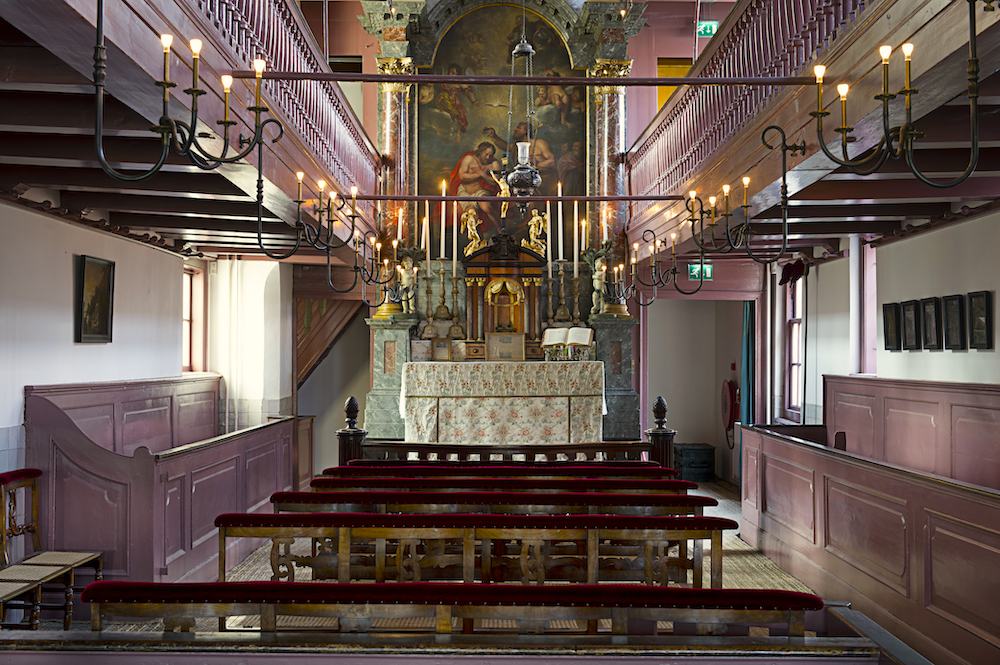
Interior view of Museum Ons' Lieve Heer op Solder in Amsterdam (Arjan Bronkhorst)*
Prior to mid-March, I don't remember many weeks, let alone months, passing without at least one museum visit. Navigating the downtown Washington, D.C., virtual ghost town on socially-distanced National Mall walks with my toddler feels like exploring a Twilight Zone set. Extraordinary architecture calls Washington home, but it's hard to enjoy fully knowing the gems inside great museum buildings are off-limits.
On walks, my mind wanders to Holland's clandestine churches, particularly Amsterdam's Museum Ons' Lieve Heer op Solder (Our Lord in the Attic), which I visited in 2017. The Israelites carried an Ark of the Covenant sandwich through the Sinai desert — a wooden box nestled between two golden ones — but hidden churches (schuilkerken) present differently. Simultaneously marking early-modern Dutch tolerance and dogmatism, they contain treasures but by design appear plain from the street.
Today, Catholics outnumber Protestants in the Netherlands 23.6% to 14.9%, but demographics were reversed after Protestants assumed power there in the 16th century. In the ensuing 200 years, Roman Catholics made up one-fifth of the population of Amsterdam, which banned public Catholic celebrations and restricted worship to churches sans identifiable façades. The republic granted freedom of conscience (geweten) to all, and the official Reformed church didn't force its Calvinist faith but required certain beliefs remain private, said Robert Schillemans, attic museum curator.
"As long as these other religions stayed 'low' and restricted themselves to religious matters, they could act rather freely," said Schillemans.
Advertisement
Though illiberal by today's standards, 16th- and 17th-century Dutch policy here paled in comparison to French Catholic oppression of Protestant Huguenots at the time, according to Remco Dörr, a host for the Hague's marketing and convention bureau. In Holland, Catholics were expected to perform a kind of disappearing act, a " 'We know you're there, but we don't want to see you' mentality," Dörr said.
The worship landscape diverged in different cities and provinces. Large Catholic populations sustained bigger church houses with priests, and governments in cities which relied on international commerce, like Amsterdam, were loath to place onerous burdens on Catholic merchants. "Trade had to go on of course," Dörr said.
Some 62 Catholic house churches could be found in Amsterdam in 1656. By 1681, there were 26 larger, more permanent ones, said Schillemans. Fewer hidden churches existed in Utrecht and Haarlem, and in more rural areas, Catholics might pray in a farm church.
"Catholics needed a priest for sacraments and so on, so if there wasn't one around, Catholicism could not flourish," he said. "Priests needed to be looked after, so if there was no money, a house church (statie), or shelter for him, he would go to other places for safety and gather Catholics around him there."
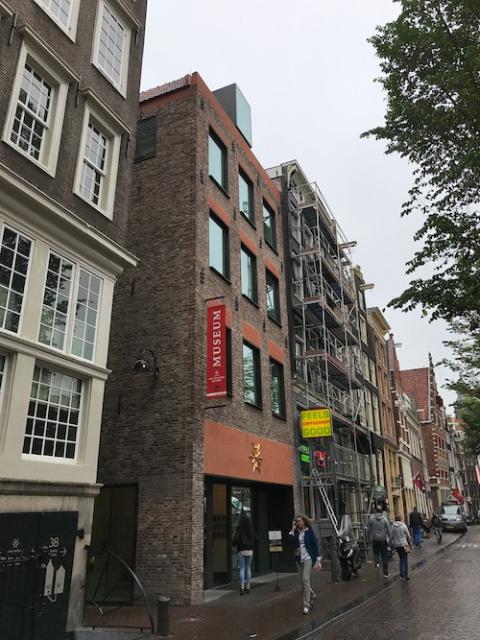
The exterior of Amsterdam's attic museum retains the former church's 19th- rather than 17th-century appearance. (Menachem Wecker)
Home churches (huiskerken) could be found in houses of Catholic aristocrats and wealthy merchants, and barn churches spread in the country — largely in the north, as there was less need in the south, which remained more Catholic — Dörr said. Mennonites, Lutherans, Old Catholics and Remonstrants also were restricted in their public worship by the mid-17th century, while the Calvinist church permitted foreigners and Jews to practice more freely. The policies ended formally in 1796, but Catholics could only begin rebuilding churches in 1848, Dörr said.
As recently as the 1960s, Dutch Protestants avoided purchasing goods at Catholic-owned stores and vice-versa. "Calvinism is so deep in our Dutch genes that even my mother said 'We are Calvinist Jews,' " Dörr said.
Amsterdam's attic museum, its second oldest after the comprehensive Rijksmuseum, retains the former church's 19th- rather than 17th-century appearance, but elements still testify to its 1661 origins when Catholic merchant Jan Hartman joined the attics of three adjacent homes — one overlooking the Oudezijds Voorburgwal canal — he'd purchased to form a church.
Knowing a preserved church awaits within doesn't sufficiently prepare for the interior beauty as one enters the building and ascends staircases. Despite the dimly-lit space, the experience is an aesthetic cousin of the temporary blindness upon first stepping out into sunlight. The lavish church comes as a revelation, which helps approximate some of what it must have meant for 17th-century worshippers to believe they'd crossed a threshold into a sacred space and temporarily left commercial and secular concerns behind. Unlike cathedrals, whose gravitas captivates from afar, clandestine churches elicit a purer joy in their acceleration, so to speak, from 0 to 60 almost instantaneously.
Museum Ons' Lieve Heer op Solder is among the best-preserved clandestine churches, but others also attest to tougher times for Catholic people in Holland. An 18th-century hidden church remains on the Hague street Juffrouw Idastraat, for example. The name refers to Ms. Ida who "was a knocker," Dörr said. "The churches couldn't ring their bells, so this lady went from door to door to tell people that there was a service." (I sympathize; my last name seems to be Yiddish for the human "alarm clock" who rapped on shutters waking people for morning prayers.)
Dörr sees little parallel in the early modern Netherlands to the tension between interior and private spaces and exterior and public spaces in the pandemic. The virus affects everyone irrespective of faith, he said. But crossing that threshold from commercial Amsterdam streets into private residences with sacred spaces in the attics strikes others, like Poland-born American architect Daniel Libeskind, as quite appropriate metaphorically for the present.
Having visited Dutch clandestine churches, Libeskind — whose designs include Berlin's Jewish museum, Toronto's Royal Ontario Museum, the Denver Art Museum, and the rebuilt World Trade Center site in lower Manhattan — thinks there's something to the cognitive dissonance I feel on my walks.
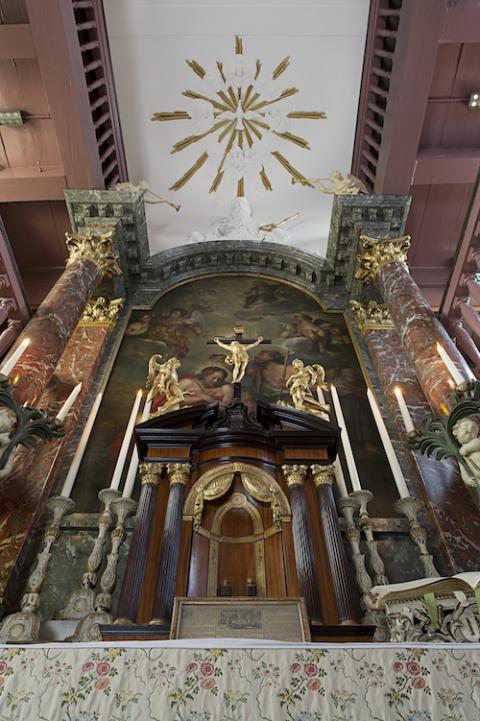
Altar of the attic church in Amsterdam (Arjan Bronkhorst)
"Looking at these closed institutions and thinking what is inside of them is longing for the shared space that has a human meaning," he said. "The example of the Amsterdam church is a very good one: how people carved out those spaces — sometimes they were really religious spaces — to give an identity to something deeper than just the elevation of a building, or the look of a building from the outside."
That deeper element was what Libeskind had in mind when he revealed deliberately the "slurry" foundational wall in the Ground Zero project.
"I exposed it so that people would know what it means to be at the bedrock and to construct something out of the bedrock," he said. "In many of my projects, I've sought to navigate between this notion of secular and normal state and a sense of something deeper, something that goes beyond just our own egos."
The architect wasn't surprised when Pope Francis chose that exposed wall, with all its symbolism, as the site to deliver his address to all religions when he visited Ground Zero in 2015.
"It is a wall that testifies both to tragedy and also to hope," Libeskind said. "To destruction and also to construction. That was a deep and significant moment for me, and I think for many others in this world of turmoil."
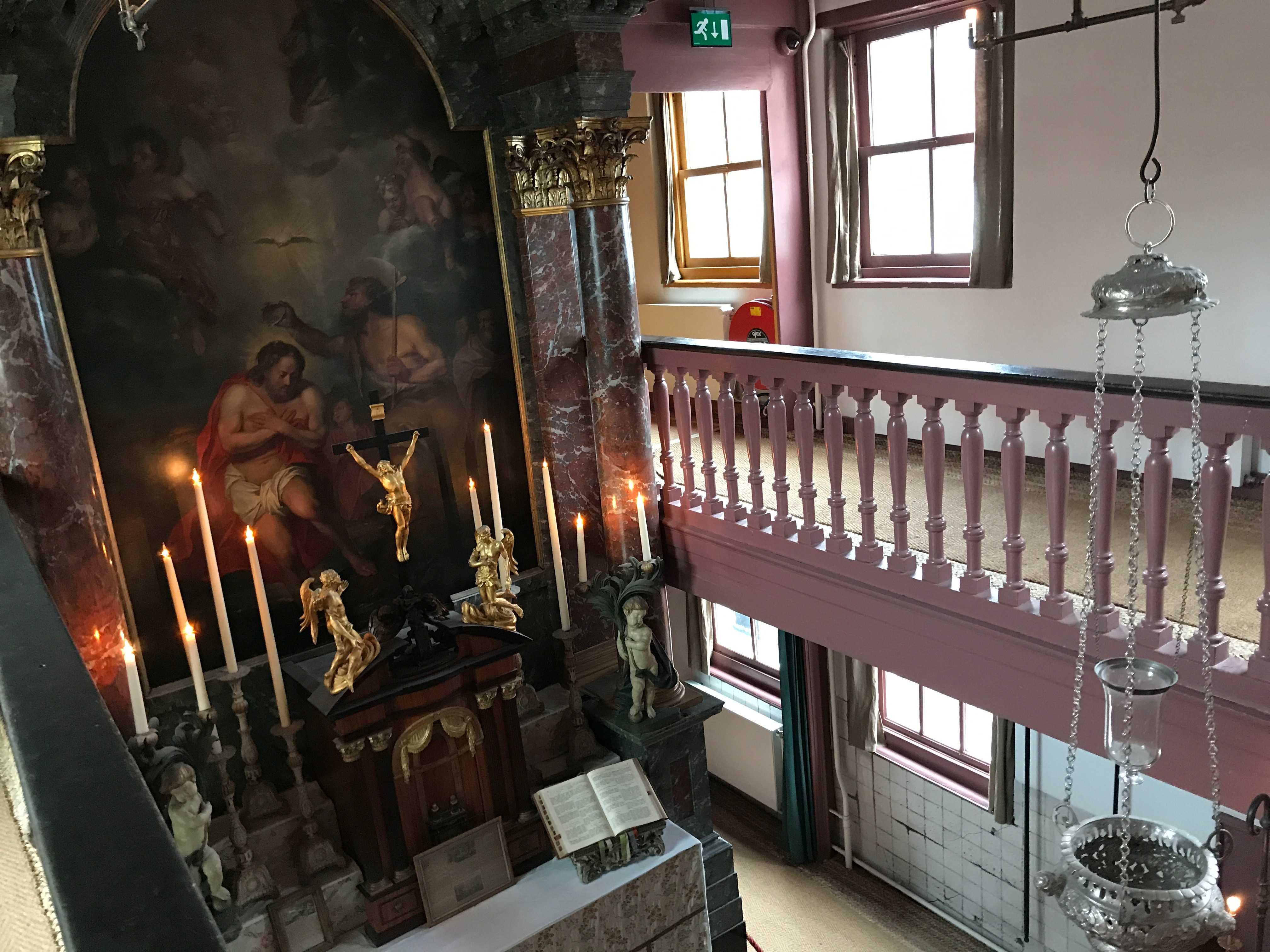
View from gallery of Our Lord of the Attic church in Amsterdam (Menachem Wecker)
Libeskind's sense of architecture's optimism and spiritual capacity — that architecture rises out of yet remains rooted in the depths — is also a metaphor for the architect, who grew up Jewish under a repressive, Communist Polish government. It also applies to the hidden churches, and to the shuttered great museums of Washington. The tension between interior and exterior space, and state-endorsed public activity and those tolerated only if they kept to themselves and didn't trumpet their beliefs too loudly, feels especially poignant now.
Many brick-and-mortar churches are still shuttered, with congregations worshiping digitally. Many museums and other cultural spaces, which help us understand and appreciate our past, are also closed for now, but their absence may well engender fonder hearts. And their closure gives us pause to consider their sanctity. When Libeskind walks around lower Manhattan, where he lives, he feels a sense of the sacred amid the emptiness.
"Something everybody took for granted as just there and available — to step on the sidewalk, or to walk — suddenly, we realize there is something amazing about the earth, the sky, the trees, other people in front of us, and buildings," he said. "Things we've gotten used to appear in a wondrous perspective to us, even if we are scared or terrified by what is happening."
Even many religious institutions today can feel commercial, Libeskind thinks, but amid pandemic, it's easier to feel a "sense of the mystery and the wonder of what is happening."
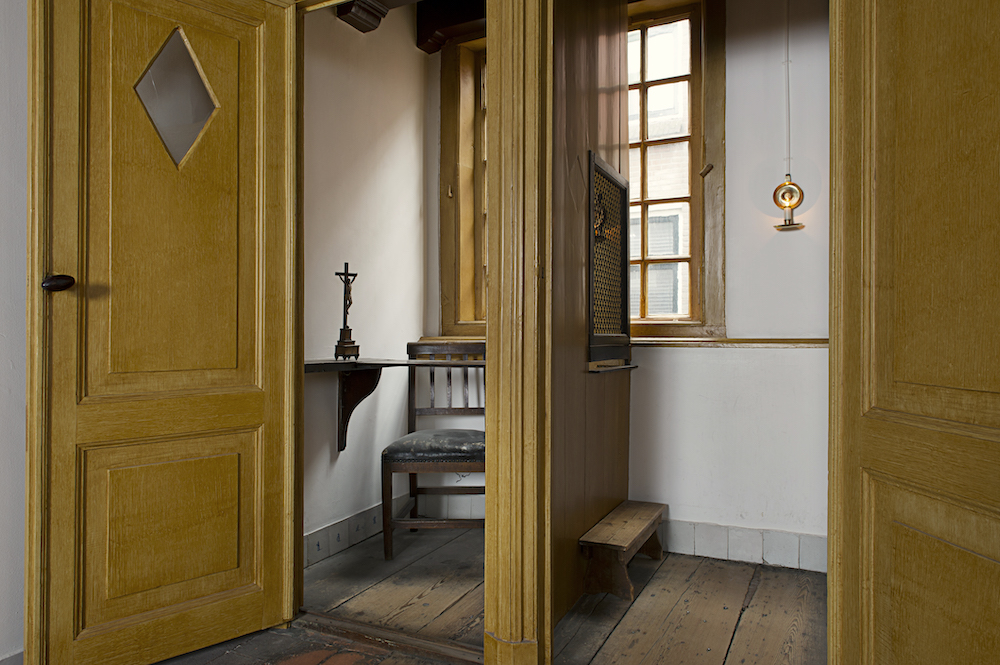
Confessional at Amsterdam's attic museum (Arjan Bronkhorst)
*Editor's note: This article has been updated to correct a photograph attribution.
[Menachem Wecker is a freelance writer based in Washington, D.C., and a National Press Club board member.]








